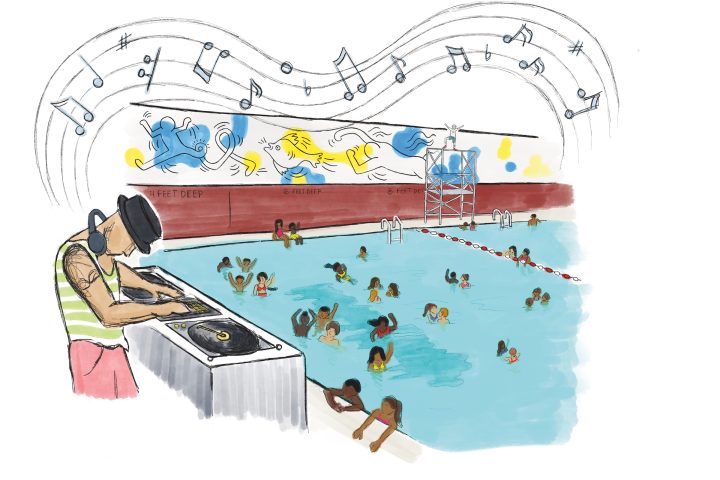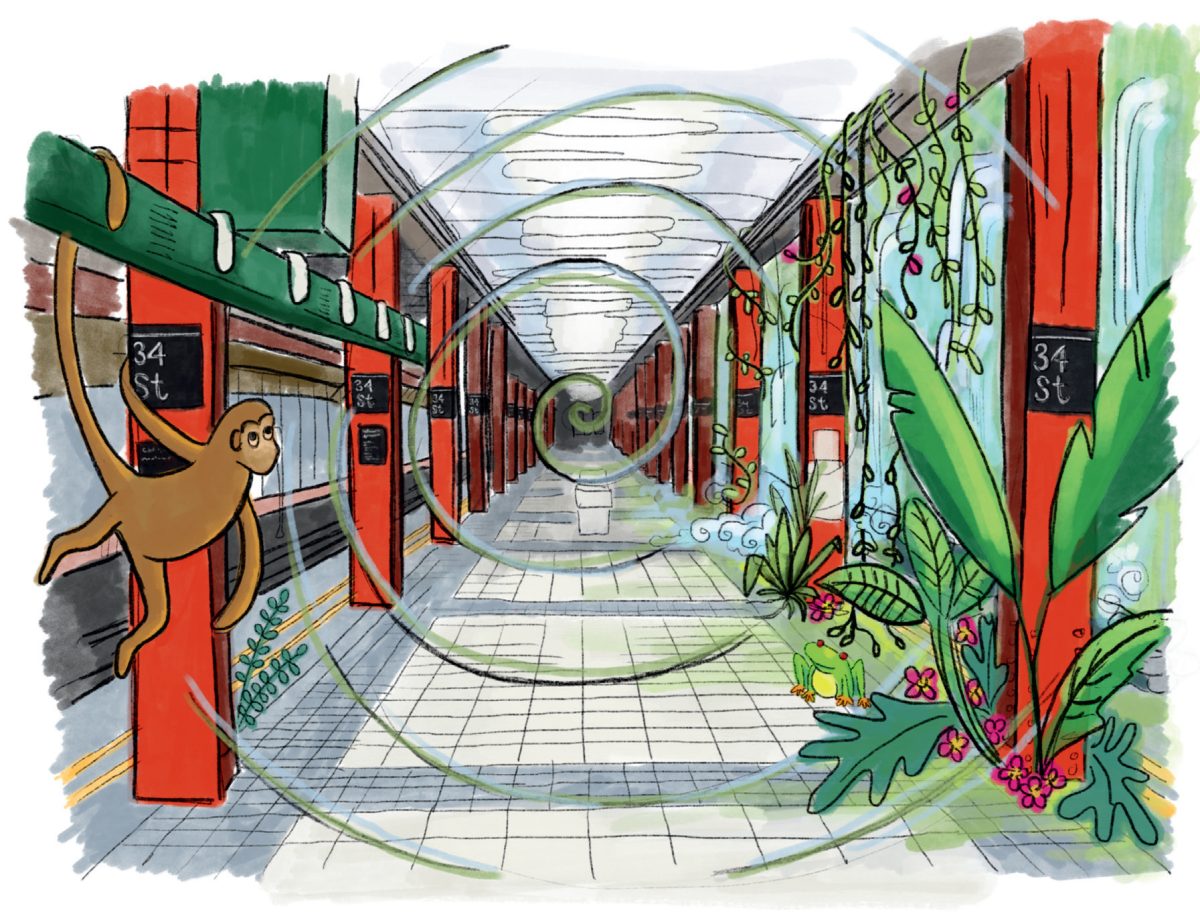
Have you ever spun the Astor Place cube located in the East Village of Manhattan? (It’s quite heavy so likely it took a couple of you working in tandem to do it.) If not, you should. The child in you will thank you and your steps will be lighter the rest of that day. This is the thing about New York City: Despite it being a demanding town where social and professional interactions can be graceless and awkward, even bruising, the art and culture redeems the city’s shortcomings. It gives you life. I’ve long felt that way having grown up in New York and come back to it after living in Los Angeles and London. And though I live just north of the city I still treasure the art that can be experienced publicly in New York City. I’ve discovered a guide to its entire treasure trove by reading Art Hiding in New York by Lori Zimmer with illustrations by Maria Krasinski.

Reading it I find out that the Astor Place cube is actually titled “Alamo” and was created by Tony Rosenthal and was the city’s first permanent contemporary outdoor sculpture installed in New York. The book is filled with stories of various art pieces, in public and private residencies, visual and acoustic, obvious and hidden, extant and extinct. Most of the narratives are fascinating. I learn that the Danish-American sculptor Gutzon Borglum, who made the Mount Rushmore reliefs, has four pieces made with his wife Estelle Rumbold, decorating the building at 20 Vesey Street in the Financial District. Did you know that there used to be an art school at Grand Central Terminal? Me either! It was founded by John Singer Sargent and Daniel Chester French, and Arshile Gorky taught there.
I learn about art work that I’ve often seen and loved but never really got identifying information on such as Keith Haring’s “Crack is Wack” (1986) mural in Harlem at East 128th Street and Second Avenue, and Jean Dubuffet’s “Group of Four Trees” (1969–72) in the Financial District. I recall being astounded by the trees when I saw them first as a teenager. Another enduring favorite are the tiny money-grubbing creatures created by Tom Otterness’s for his “Life Underground” (1998–2000) installation within the A,C,E, and L train station at Eighth Avenue and 14th Street. Every time I see it, it makes me smile.

The book is thematically structured. Chapters divvy up the city into “Surprising Spots,” “Secrets of Sculpture,” “Look to the Lobbies,” Architectural Interventions,” and on. Within this framework, Zimmer and Krasinski produced this book with high and low perspectives. They cite the very upscale windows at Bergdorf Goodman and the murals at Bemelmans Bar at the Carlyle Hotel, while also featuring the “Reach” (1995) sound piece by Christopher Janney at the 34th Street subway station. It’s a true attempt at inclusivity to discuss works that are intended to be seen and appreciated by the wealthy and the common folk and those in between.

Reading Art Hiding in New York, I’ve made an impromptu list of places I need to see with friends on an art treasure hunt day: Louise Nevelson’s “Shadows and Flags” (1977) in lower Manhattan; Marisol’s American Merchant Marine Memorial (1991) at Battery Place; and Ben Rubin’s and Mark Hansen’s “Moveable Type” (2007) in the lobby of the New York Times building in Times Square. I recommend you make your own games with this book. Like the city it embraces, it will reward you.

Art Hiding in New York: An Illustrated Guide to the City’s Secret Masterpieces by Lori Zimmer and Maria Krasinski was published by Running Press in 2020.
0 Commentaires